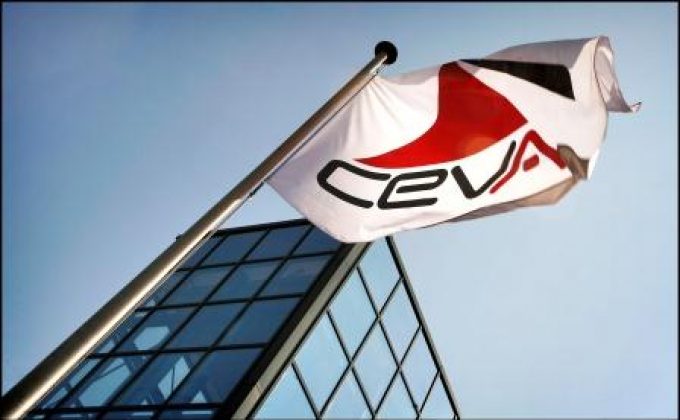Ceva Logistics has a new king
European FVL power

I have been looking for signs that CEVA is scraping the bottom of the barrel for some time, and I think I found one on page six of its quarterly trading update, released in early May.
I discussed its recent asset-backed securitisation, also known as “the European ABS”, with a few investors in London and New York, who I assumed were trading CEVA’s debt in the secondary market.
Our recent coverage of the CEVA story had caught their attention, and the fact that CEVA recently wrapped up a “€170m pan-European asset-backed securitisation of receivables” didn’t quench their thirst for an IPO of the troubled logistics company owned by private equity house Apollo.
“First-quarter results were not great due to seasonality,” one told me, while another buy-side investor pointed out that “looking at trends since 2008, this quarter was in line with past performance, if not relatively better, given current market conditions”.
Both agreed that CEVA still had a chance to tap public markets.
There is currently a window of opportunity, given that market appetite for IPOs is surging both in the US and Europe, however, the odds remain long, in my view – and the ABS deal is only mildly positive for investors.
Liquidity
CEVA said in its quarterly update that “as at 31 March 2016, the group had $192m (31 December 2015, $309m) of cash and cash equivalents on its balance sheet”.
It said: “With undrawn central facilities of $411m available at 31 March 2016 (31 December 2015, $267m), we therefore had headroom of $603m at 31 March 2016 (31 December 2015, $576m) to fund operating activities for the foreseeable future.
“Available headroom increased due to a €170m pan-European asset-backed securitisation which closed on 25 March 2016 [“the European ABS”]. This is a two-year commitment from two banks, based on securitisation of receivables from CEVA companies in six European countries.
“As of 31 March 2016, availability under the new facility, which was not drawn, was approximately $146m (€128m).”
Meanwhile, CEVA’s net debt increased “by 5% to $1.96bn as at 31 March 2016 (31 December 2015, $1,86m)… due to the decrease in cash, as noted above”.
Since then, net debt could have risen further, however.
Cash call, trade sale or IPO?
If so, the obvious question is whether the ABS deal is the last stop before a cash call ensues.
Most investors I talked to immediately ruled this out, and would love to see a premium offer emerge from trade buyers as soon as possible – although realistically, opportunistic buyers would likely wait or place a low-ball bid.
Meanwhile, my sources remain adamant that an IPO is still viable; although most of them also agree it would need to be attractively priced to win interested from the market. On this basis, the ball could be in Apollo’s court, although I doubt the private equity powerhouse will take the risk of approaching the market if it can walk away with a sale trade at a decent price – say $3bn for the enterprise.
Nonetheless, “the stars could align”, a third banking source told me. “Come on, did you not pay attention to the news?” he asked.
“Stock-market IPOs are rebounding with a bang” was the headline from MarketWatch on 28 May, while CNBC reported in mid-April that the IPO market was finally thawing. And hey, even Philips managed to get away with an IPO for its lighting unit after years of failing to spin-off the troubled business.
Historically, IPO volumes rise, and deals such as this typically get done at this time of the year, but CEVA has yet to even file for a float, which means that a market listing could not happen until September at the earliest – by when market volatility could have returned with a vengeance.
If the US Federal Reserve hikes rates in June, which is not necessarily priced-in in the US yield curve, then we’ll have four to six months of trade with the VIX index (measuring the volatility of the S&P 500) significantly higher than 13 — say 20, or more.
If this happens, we’ll probably return to square one in regard to asset valuations for the year – crude prices have now doubled; while gold and the dollar are displaying contradictory patterns.
Value
So, equity investors ought to be wary of committing to a deleveraging story that might launch in the midst of one of the most difficult markets of the last decade.
In this context, the poor post-IPO performance of a completely unrelated company, First Data Corp – which, like CEVA would do, used IPO proceeds to pay down its debts – is surely a warning sign. FDC stock is down 20% in seven months.
In this scenario, I cannot see how CEVA could command a decent valuation.
Consider Li & Fung, arguably the most important supplier of clothing worldwide. Its stock hit a 52-week low on Monday, having fallen 36% during the past 12 months – this must say something about appetites for logistics assets at IPO.
Li & Fung stock now trades at a lowly 8.5x trailing and forward ebitda, and although its valuation is not strictly comparable with CEVA’s, a back-of-the-envelope calculation indicates CEVA’s enterprise value would be worth about $2.4bn, assuming a trading multiple in that ballpark, yielding an equity value of just $400m.
Its junior and senior debt currently trades at between 82 and 91 cents on the dollar, and the fact that it looks fully priced to me, clearly says how badly a CEVA IPO story could end in this market.
Comment on this article